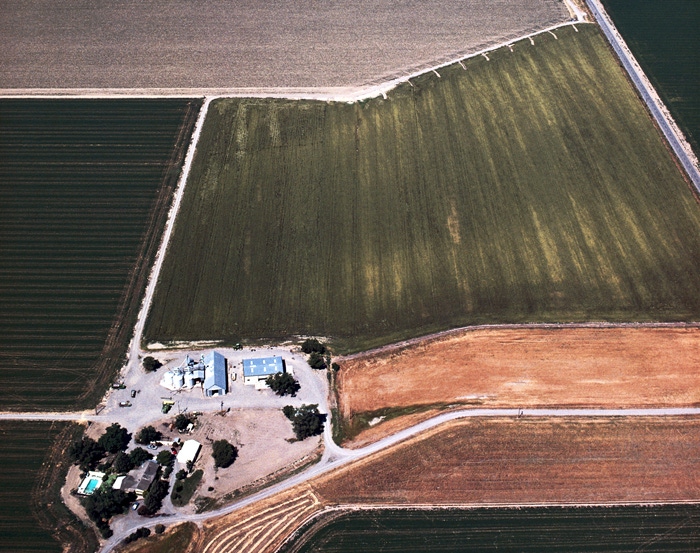
Producers keeping a level head with crop mix
The price of cotton was a hot topic at the Mid-South Farm and Gin Show, but farmers won't be making huge shifts in acreage.Corn and grain sorghum acreage could be increasing in some parts of Arkansas, while rice acres are expected to fall.Some farmers are booking crops early, others are taking a wait and see approach.

Farmers interviewed at the Mid-South Farm and Gin Show in late February are excited about the price of new crop cotton these days. But they’re keeping a level head about making significant changes to their crop mix.
Thomas Rice, who farms 1,700 acres of dryland cotton in Dyer County in west Tennessee, thinks cotton prices this spring “are wonderful. I just hope they’ll hold on a while, and maybe we can make a little headway.”
Rice produced “just a so-so cotton crop” in 2010. “It wasn’t outstanding, but I harvested about 800 pounds.”
Rice would like to increase cotton acres in 2011, “but I can’t increase it much because I’m just about topped out now. I farm about 1,900 acres total. I have some low ground that I usually put in soybeans. I’ve stuck with cotton through thick and thin and I hope that this year we can reap some benefit from it.”
Rice doesn’t have a final price on his old crop cotton yet, “so we don’t know how it’s going to settle out. I doubt if we’ll average a dollar a pound. I’ve already contracted about 80 percent of my 2011 crop at a pretty good price. I’m satisfied with that.”
Input costs this coming season are a big concern for Rice. “We don’t need for the input costs to follow the market all the way up.”
Steve Dennis, who was touring the gin show with his farm hand, Reid Spencer, farms 300 acres of soybeans in Elmore County, Ala. He hasn’t booked any soybeans for 2011 yet, preferring to wait and see where prices go. “I have some friends last year who booked soybeans at $9 and when they were cutting them, it was $10 and $11. You just never know.”
He’s a little worried that increased cotton acres may impact his custom combining business. “I do about 1,200 to 1,300 acres every year, but some of them are cutting back on corn and raising their cotton acres. It’s cut into the business some, but they’re still rotating corn and cotton.”
Ramey Stiles, who farms around Aubrey, Ark., said, “We’re excited about the prices. I think they’ll hold firm until the crop is in the bag. I think it has to with the short supply. We’ll have the majority of it priced by planting time.”
Stiles’ usual crop mix is around 90 percent cotton, and he plans to increase his acres by about 10 percent in 2011. The additional acres will come out of soybeans.
Ginner David Blakemore, B&B Cotton Co., Campbell, Mo., sees cotton acreage rising as much as 20 percent in his area. “I suspect most of that bump will come out of corn, maybe 75 percent from corn and the balance from soybeans. I’ve also heard a couple of growers mention they’re looking at planting some grain sorghum. But I don’t think there will be a major spike in that crop.”
Consultant Chuck Farr, Mid-South Ag Consultants, Inc., Crawfordsville, Ark., says cotton acres will be up in the area, “but it won’t be a drastic increase like I keep hearing from some areas. We may be up 5 percent.”
Farr adds that corn and grain sorghum will be up 20 percent over last year — and most of that increase will come out of rice and soybeans.
“I don’t know that grain sorghum will be hot everywhere, but it will be in Crittenden County and, maybe, in northeast Arkansas. That isn’t a huge surprise. Crittenden County has always been the highest grain sorghum-producing county in the state. Grain sorghum tends to trend behind the corn crop as far as pricing. It’s a much friendlier dryland crop than dryland corn.”
Ginner Kevin Watts, McGehee, Ark.’s Producers Cotton Gin says many farmers in his area had soybeans and corn booked for 2011 before the price of cotton took off.
“I think our cotton acreage will be up — but it won’t be an astronomical number. We may see a 15 percent increase around McGehee. We’ve definitely got people that didn’t raise cotton in 2010 that will farm some this year.”
Watts is preparing his gin for handling more round-bale cotton pickers this fall. “This will be a different type of ginning for us — we’ve not worked any round bales except for a few we’ve played with. This, along with the extra cotton means ginning season is going to be busy, busy.”
Watts believes the bump in cotton acres will likely come out of soybeans. He also sees an increase in corn acres in the area.
About the Author(s)
You May Also Like





